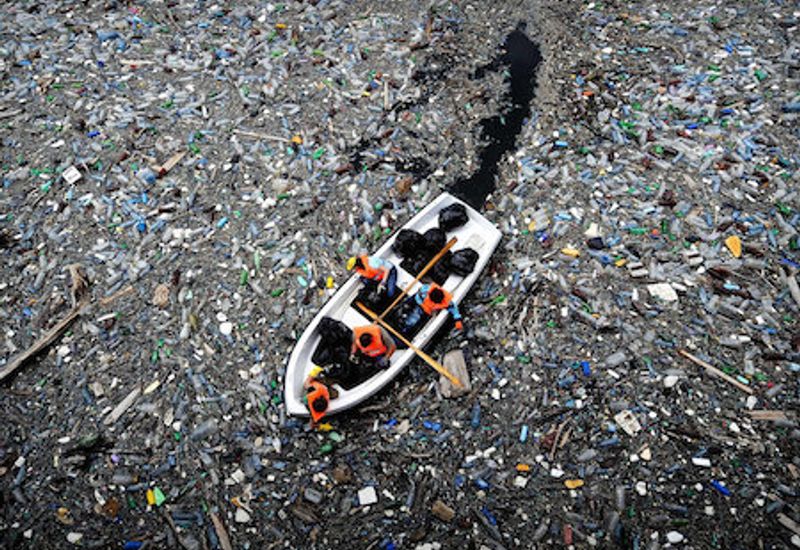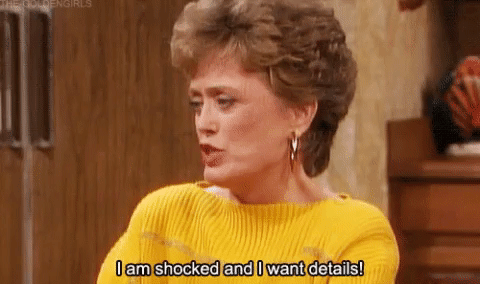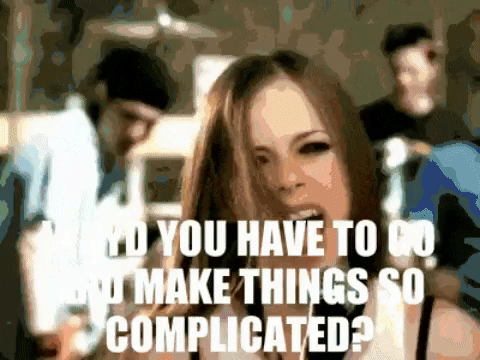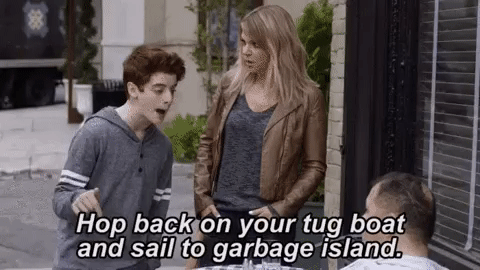Need to brush up on your knowledge about one of the biggest threats to the environment right now?
It’s a hot topic dividing those who don’t care or don’t know about this problem from those of us who have a small fit when you put uncut six-pack rings in the bin. Many of us would like to think of ourselves as pretty knowledgeable when it comes to contemporary environmental issues. Climate change is bad. Global warming is bad. Plastic in the oceans is bad. But in a surprisingly high number of cases when this statement is followed up with, ‘yes but why?’… you’re left with a blank stare.
This isn't going to convince anyone who doesn’t care about some random fish 8,000 miles away that recycling is good. So, for those of you who want to score some serious points at the table of your next sceptic dinner party, or simply want to know what all the fuss is about, here is the low-down on plastic pollution.
“It’s not about size it’s about how you use it”. Yes, lads, this one applies to plastic too. Generally, plastics fall into 2 categories when it comes to size: macroplastics and microplastics. Now macros are anything bigger than 5mm, that’s about the size of the tiny square they used to put in the centre of the iPhone home button. And (surprise surprise) microplastics are anything smaller than this, right down to the stuff we can’t see without a microscope.
You’ve probably heard about the problems caused by macroplastics. They’re large problems, visible and more heart-wrenchingly newsworthy. A six-pack ring sat around the neck of a seabird or turtle makes a very visible problem that is easy to broadcast to the public via videos and pictures. Larger plastics like this can strangle animals or prevent them from eating.
Imagine having a rope tied incredibly tightly around your neck while you’re trying to swallow a live fish who’s desperately attempting to flop its way back to the sea. They make heroic rescue stories: Hot, sensitive marine biologist cuts dolphin loose from fishing net! Don’t get me wrong, it’s very important to protect and save animals from these situations, however, macroplastics do tend to steal the spotlight away from their little brother.
That’s right, it’s those pesky microplastics who seem to be the real villain. The kind of shady villain you think is just the quiet best friend for the whole movie and then in the final ten minutes, you realise he collects cat skeletons and named his tube sock Barry. Microplastics come from two sources. They either start life as a microplastic, creeping their way innocently into our water system as the microbeads in toothpaste or face scrubs. If you want extra dinner table points, these are called primary microplastics.
Their second entry point is as macroplastics which break down into tiny micro pieces over time (no points for guessing these are secondary microplastics). That’s right, the same ring that strangled the cute turtle earlier is back for more blood, and this time its broken down into microscopic pieces and tiny little fish are mistaking it for food. The dastardly villain. But that’s fine right? The fish will just digest it and shoot it back out again, in the great digestive circle of life.
Nope. Well, yes it will probably come out in the end, but that’s not the end of the damage. You see, plastics aren’t natural. There’s a reason that humans don’t eat them, so it only seems logical that fish probably shouldn’t either. When fish eat plastic, they think they are full up when really, they haven’t taken in any nutrition. Like when you accidentally take a bite of a plastic fruit before you realise it isn’t real… Except you’re a fish and you don’t know it’s plastic, so you just eat the whole thing.
Also, plastics contain chemicals which are toxic and carcinogenic (cancer-causing) so when inside the body of a fish… the fish isn’t going to come off great in that fight. On top of this, when lots of tiny fish eat lots of microplastics, one big fish can eat 20 of these tiny fish. This big fella is now swimming around with 20 tiny fish worth of microplastics inside him. Then a massive fish eats 5 big fish… the massive fish is eaten by a seabird… 5 seabirds are eaten by a polar bear. Suddenly the polar bear has a huge amount of toxic plastic inside him. Ten extra dinner table points for calling this biomagnification, which is the concentration of any pollutant up the food chain.
Now there’s also a rather glaring problem presented by this biomagnification… other than the death of all the animals who ingest the plastic. Those massive fish may be something like cod or tuna which you may recognise from the tins in your cupboard. That’s right: if you eat seafood of any sort, the overwhelming likelihood is that you have ingested plastic you can’t even see. If you eat a lot of seafood? You just might be the polar bear in this story.
But can you just avoid the fish in plastic polluted areas? The truth is that there is virtually no area untouched by plastic. Plastic bags and bottles wash up on the most remote, untouched islands these days as plastics like polystyrene are buoyant they can be carried huge distances, meanwhile breaking off tiny little pieces of themselves wherever they go. Many people will have heard of the North Pacific Garbage patch, but if you haven’t you might want to give it a google. It’s a huge island made entirely from rubbish and it’s more than 3 times the size of France. Yeah, it’s pretty gross, and we source our food out of that water.
So now that you can wow your dinner party sceptics and finally come back with an answer to why plastics are so awful, what can you do about it? Well, quite simply, you can recycle, and properly sort your recycling. You can buy things to last years instead of days, like water bottles. You can even make changes you wouldn’t think of, such as not buying that plastic toothbrush every 3 months (which takes over 400 years to decompose) and instead invest in a biodegradable bamboo toothbrush.
Another thing to avoid is microbeads, these little pests were made illegal in the UK in January 2018, however, some older products still contain them. You can boycott anything containing tiny plastics and opt for natural alternatives.
I’m not saying shower in a cave of natural spring water and never have a packet of crisps again. I’m saying look out for the plastic in your life (trust me there’s more than you think) and simply look into alternatives. After all, you can wow the dinner party and just leave it there, or you can help to change the world, one cut six-pack at a time.
What do you do to reduce the amount of plastic you use? Join the Student Hut Community today and let us know in our paid opinion panel.


















